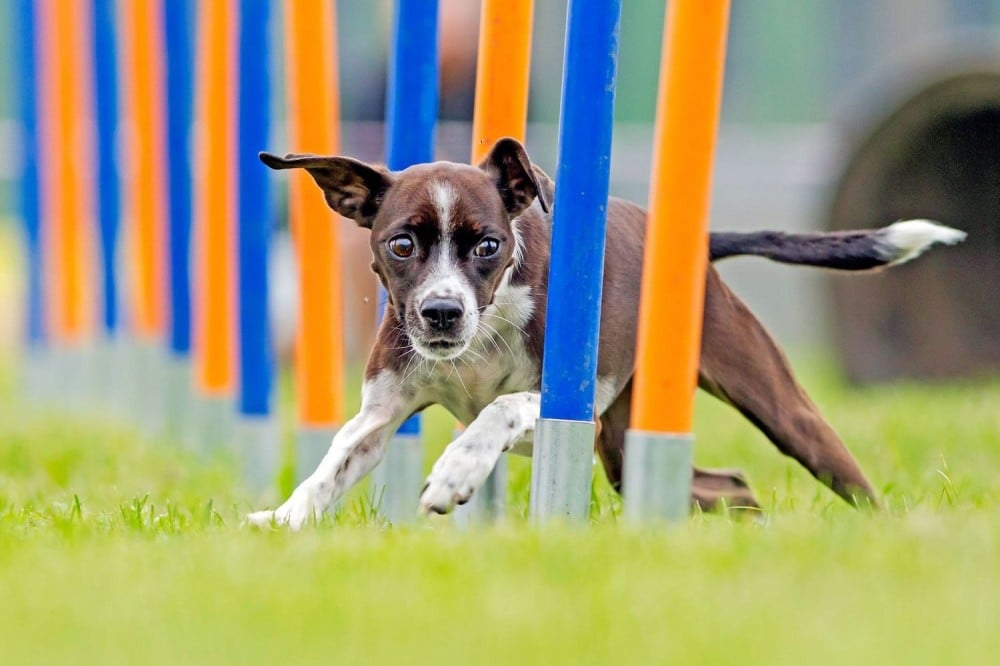
Raising and training dogs are essential aspects of building a healthy and strong relationship between a dog and its owner. In light of the continuous developments in the concept of raising pets, determining the optimal age to start training dogs becomes an essential issue to ensure the success of this process and achieve the expected benefits. In this article, we will review the importance of dog training, and determine the appropriate time period to start this training, with a focus on effective strategies and appropriate techniques for the different stages of a dog’s life.
The importance of dog training and its benefits?
Raising and training dogs are essential for developing their behavior and enhancing communication and mutual understanding between them and their owners. By training a dog, discipline and obedience can be improved, emotional bonds strengthened, and a strong foundation for a happy shared life built.
The ideal age to start training dogs?
Determining the optimal age to start training dogs depends on their life stages, which can be divided into early childhood and the later period. In the early childhood stage, the focus can be on learning basic commands and developing emotional bonds, while in the later period the scope of training can be expanded to include more complex skills, and we will discuss this part below.
Effective dog training strategies?
Providing effective dog training strategies enhances owners' understanding of effective and appropriate methods. Positive stimulation techniques can be used to reinforce desired behaviors, while vocal phrases and movements can be used to clearly convey messages to the dog.
Feedback and motivation?
This part deals with important points to consider while training a dog, such as understanding the nature of the behavior and dealing with obstacles effectively. It also stresses the importance of using positive motivation and providing rewards as effective ways to reinforce desired behaviors. Among the rewards that you can give your dog are motivational food or games , and you can see many of them. In our store 
Advanced dog training techniques?
In later stages of a dog's life, advanced training techniques can be applied to improve performance and develop additional skills. Including learning to guard, search for objects, and perform complex movements, which enhances antiquities
The mental and physical health of the dog.
Reacting to unwanted behaviors?
This part covers how to react to unwanted dog behaviors, and how they can be corrected effectively without resorting to harmful punishments. It highlights the importance of patience, understanding the causes of behavior, and guiding it positively.
What are the appropriate ages to train your pet dog?
The process of training a dog is a rewarding journey that strengthens the bond between you and your furry friend. However, understanding when and how to train your dog according to his age is crucial to achieving effective and successful training. In this guide, we'll explore age-specific training guidelines to ensure your dog develops good behavior and becomes a polite companion.
1. Puppy infancy (up to 6 months): During your puppy's first months of life, focus on building a strong foundation for future training. Prioritize positive socialization experiences to expose your puppy to different people, environments, and other animals. Begin teaching basic commands such as sit, stay, and come in a positive and consistent manner.
- Training objectives:
-Communicate with people, animals and environments.
- Teaching basic commands.
- Establish routines for eating, urinating, and playtime.
- advice:
- Use sweets and reinforce positive behavior.
- Keep training periods short (5-10 minutes).
- Encourage play to build a positive association with training.
2. Adolescence (from 6 months to 2 years):
Adolescence is a difficult period where your dog may test limits. Be patient and consistent, and reinforce previous commands as you introduce more advanced commands. Focus on impulse control and walking ethics during hikes.
- Training objectives:
- Reinforce basic commands with deviations.
- Teaching chain training and curb traction.
- Work on impulse control and patience.
- advice:
- Use high-value sweets as an incentive.
- Gradually increase training time.
-Consistency is the key to overcoming challenges.
3. Complete youth (from 2 to 4 years):
By this age, your dog should have grasped basic commands. Now you can focus on improving obedience, teaching advanced tricks, and addressing special behavior issues. Consider joining advanced training classes or participating in activities such as agility to keep your dog mentally and physically active.
- Training objectives:
- Listen to advanced commands and teach advanced tricks.
- Addressing specific behavior issues.
- Participate in mentally stimulating activities.
- advice:
- Make the training periods varied and exciting.
- Regularly review and reinforce learned commands.
- Provide mental stimulation through puzzle games and activities.
4. Maturity (4 years and above):
Although older dogs can still learn new tricks, training during their mature years should focus on maintaining good behavior and addressing any age-related issues. Regular physical activity is necessary to maintain your dog's health and mental acuity.
- Training objectives:
- Maintain good behavior and obedience.
- Addressing age-related issues (joint pain, low energy).
- Incorporate low-stress exercises for mental stimulation.
- advice:
- Adjust training intensity based on your dog's health.
- Watch for signs of discomfort during activities.
- Focus on maintaining strong bonds through positive interactions.
Conclusion:
Adapting the training approach based on the age of the dog is crucial to achieving a successful and enjoyable training experience. Whether you're starting with a playful puppy or working with a mature companion, patience, consistency, and positive behavior reinforcement are key elements to building a strong, lasting bond with your furry friend. Remember that every dog is unique, so adapt your training to suit their individual needs and personality.
At the conclusion of the article, it is emphasized that dog training is a vital process for improving mutual understanding between the dog and its owner. Determining the optimal age to start training requires taking into account the specific needs of each dog and adapting methods and techniques to its different life stages. With deep understanding and proper training, a dog owner can build a nurturing relationship based on trust and love, thus promoting an enjoyable and productive shared life.

